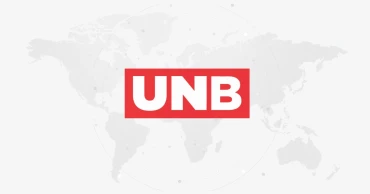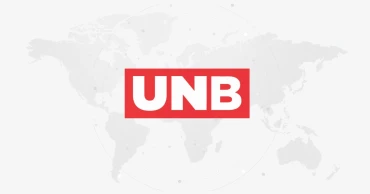FY 2025-26
Ambitious targets: Govt aims to collect Tk 5872 billion and Tk 7097 billion revenue in FY 2024-25, FY 2025-26
The government of Bangladesh has set ambitious revenue collection targets for the fiscal years 2024-25 and 2025-26, aiming to gather Tk 5872 billion and Tk 7097 billion, respectively. The strategy hinges on enhancing digitalization and simplifying tax procedures for both businesses and individuals.
The focus will be on direct taxes and VAT to raise more revenue. In addition to expanding the tax net and increasing the capacity of tax officials, exercises will be carried out to rationalise the current culture of widespread tax exemptions and to bring in heightened transparency in the budgetary discourse.
As per the Medium Term Macroeconomic Policy Statement (2023-24 to 2025-26) of the Finance Division of Finance Ministry, some Tk 5343 billion will come from the tax revenue sector in 2024-25 fiscal and Tk 6463 billion in 2025-26.
In the next two fiscal years, the National Board of Revenue (NBR) will provide Tk 5095 billion and Tk 6171 billion.
From the Income Tax wing, the projected collection will be Tk 1753 billion for the next fiscal, and Tk 2123 billion for 2025-26 fiscal. Collection from the import duties will be Tk 1511 billion and Tk 1830 billion respectively.
Tk 16.8cr in 4 days: AL revenues from nomination forms outpace toll collection from megaprojects
From VAT and Supplementary Duties, the revenue collection will be Tk 1831 billion and Tk 2218 billion respectively.
The non-NBR tax for 2024-25 and 2025-26 will be Tk 248 billion and Tk 292 billion respectively. Non-tax revenue collection will be Tk 529 billion and Tk 634 billion respectively.
The target for the running 2023-24 fiscal is Tk 5000 billion with Tk 4500 billion from tax revenue. Of the total amount, Tk 4300 billion will come from NBR through Tk 1480 billion from income tax, Tk 1275 billion from import duties, Tk 1545 billion from VAT and Supplementary duties. Some Tk 200 billion will be collected from the non-NBR sector while Tk 500 billion from non-tax revenue sector.
According to the Medium Term Macroeconomic Policy Statement, revenue outturns estimated for 2023-24 and projection for the next two years show high elasticity and buoyancy, implying robustness in revenue mobilisation in the medium term.
It mentions that among the tax and non-tax parts of the revenue, the tax revenue is forecasted to be more buoyant and elastic than the non-tax part.
Read more: Tax automation would generate more revenue collection: DCCI President
The elasticity data shows that the overall revenue is projected to grow 1.65 times higher than the nominal GDP in FY 2025-26.
As per the statement, the revenue elasticity of GDP for the 2023-24 fiscal is 1.28 times higher than the last fiscal while it is projected to be 1.40 times higher in the next 2024-25 fiscal year.
The tax revenue elasticity of GDP will be 1.33 times higher in the current fiscal while it will be 1.50 times higher in the next fiscal and 1.66 times higher in 2025-26 fiscal year.
The non-tax revenue elasticity of GDP for the running fiscal will be 0.92 times higher in the current fiscal, 0.47 times higher in the next fiscal year, and 1.57 times higher in 2025-26 fiscal year.
On the other hand, the buoyancy indicates that, in FY 2025-26 the tax revenue in real terms may grow 98 percent higher than the growth of real GDP.
The Policy Statement mentions that the revenue mobilisation acts as a catalyst to achieve the development outcomes of a country. Bangladesh has envisioned its long-term development trajectory to be a higher middle-income country in 2031 and to be a developed country in 2041.
Read more: Increase revenue, quality of services at airports: Faruk Khan tells CAAB
In addition to these aspirations, the ‘Perspective Plan of Bangladesh 2021-2041’ has targeted to raise the revenue- GDP ratio to 19.55 percent by 2031 and to reach 24 percent by 2041.
The statement says that the spectacular growth Bangladesh registered in the last decades, however, has not been underpinned by concomitant revenue growth. A large share of the revenue comes from the direct (income tax) and indirect taxes (VAT and customs) collected by the National Board of Revenue (NBR). Non-NBR taxes and Non-Tax Revenue (NTR) consists of smaller parts.
It said that there is a need to identify the reasons for low revenue collection to move onto the essential next step to correct the course. It is important to understand various issues such as the economic structure (large informality and exemptions), structural weaknesses (complicated processes and information asymmetry), and cultural factors (apathy towards paying taxes) that contribute to significant underperformance in revenue collection.
The government, the policy statement said, with the support of private sector operators, is keen to make paying taxes easy, tax rules easy to understand and rationalise tax exemptions.
Success in revenue collection will be strengthened by making the tax administration easy to approach, increasing digitalization to bring in transparency and predictability and bringing in progressivity in taxation where rich people pay a higher part of the taxes, it added.
Revenue collection up by 14.36 percent in July-October, but behind target: NBR
1 year ago
Govt aims to collect 11.2% of GDP in taxes by FY 2025-26
The government aims to collect total revenue amounting to 11.2 percent of GDP by the end of the 2025-26 fiscal, according to the Medium Term Macroeconomic Policy Statement (2023-24 to 2025-26) of the Finance Division under the Finance Ministry.
It said that Bangladesh has consistently maintained an expansionary fiscal stance keeping a moderate budget deficit—usually around 5 percent of GDP—to foster economic growth, reduce poverty, and improve social outcomes.
However, the tax-GDP ratio in Bangladesh is significantly lower than its peers and hence, the government has taken several initiatives to improve revenue collection.
Yet, it said, the fast pace of GDP growth has made it challenging to increase the ratio.
No tax fair, NBR will organise tax support service to smooth returns submission
The measures that have been undertaken are expected to gradually improve revenue collection by increasing both the tax volume and the number of taxpayers.
The Statement said that the foremost objectives of the public expenditure policy are to stimulate private investment through building infrastructures and improving the business climate, creating employment opportunities, supporting low-income population through social safety net programs, and reducing poverty through ensuring efficient redistribution of wealth and thus ensuring inclusive development.
With the advent of the Covid-19 outbreak, the government started to focus on saving lives while keeping the living standards from falling.
To do this, it mentioned, the Government emphasised on retaining jobs, providing income support, keeping supply chains active, reviving the rural economy, and ensuring food supply.
Public pension is considered tax-free, notification soon: Finance Ministry
For this, the government increased spending and implemented comprehensive recovery programs consisting of twenty-eight stimulus packages.
The stimulus efforts worked well and as a result the economy returned to a high growth trajectory fast while other countries continued to struggle.
However, the Russia-Ukraine war has again posed considerable risks and to mitigate the risks the Government has been pursuing a policy to rationalise public expenditure to stimulate economic growth by inducing domestic productivity growth.
While managing the economy to maximise welfare and development, the government is expected to maintain a budget deficit of around 5 percent of GDP over the medium term.
Historically, the size of public expenditure has been low relative to GDP in Bangladesh because of various limitations in the process of revenue collection and budget implementation.
Land Development Tax Bill 2023 passed in JS
To improve the situation, the government has undertaken certain strategies to increase public expenditure.
The target of increasing public expenditure has been set to around 16.2 percent of GDP in FY 2025-26.
Moreover, the government is pursuing the Public Financial Management (PFM) reforms process to achieve this target.
To improve overall public service delivery, financial control of budget allocations, real-time monitoring of budget execution, and integration of recurrent and capital spending, implementation of the PFM Action Plan (2018-23) is ongoing, and revised PFM Reform Action Plan (2024-2028) has recently been formulated.
Under the PFM reforms, pension automation and E-challan automation systems have been introduced with the help of iBAS++ software.
This system continues to play a significant role in simplifying the budget management process. At the same time, all beneficiary programs are being brought under the Government to Person (G2P) payment system with the help of the iBAS++ software, which brings greater transparency in government expenditure management.
In addition, all government allocations from government institutions as well as all semi-government, autonomous, and state-owned enterprises, are being brought under the Treasury Single Account (TSA) through the iBAS++ system in the medium term.
How to Deactivate TIN in Bangladesh: A Comprehensive Guide
2 years ago



